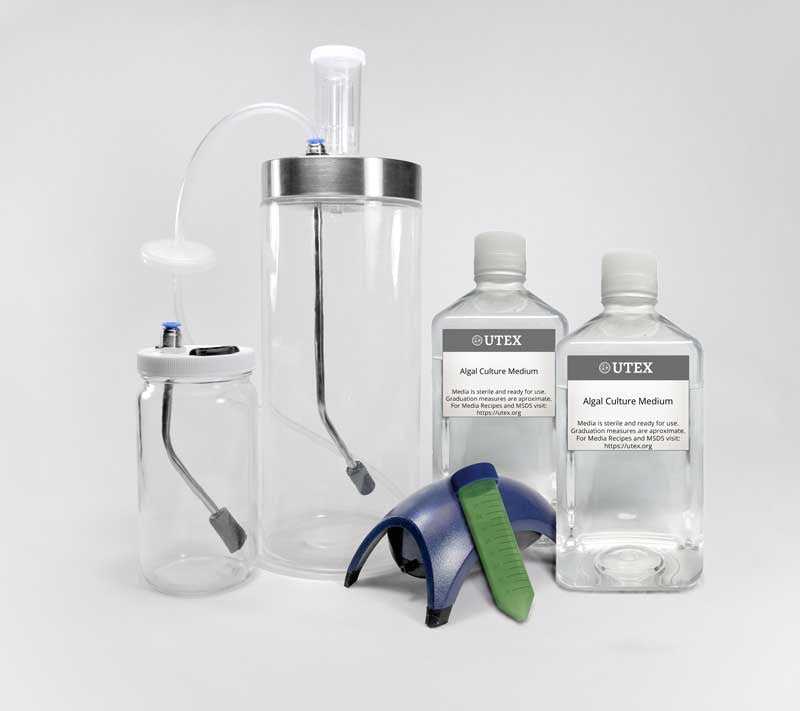Strains that belong to the Freshwater Diatom Collection (designated 'FD' in UTEX number) will require a minimum of 4-weeks to grow out before shipment.
Cryopreservation Conditions
| Temperature: | -190 °C |
| Storage: | Vapor phase of liquid nitrogen dewars |
Cryopreservation stabilizes genomic integrity, preserves culture quality, minimizes maintenance costs and reduces the risk of catastrophic loss. A broad variety of techniques employed at the CCAP, at UTEX, and elsewhere, can be found in Day, J.G. and Brand, J.J. Cryopreservation Methods for Maintaining Microalgal Cultures, in Algal Culturing Techniques, ed. R. A. Andersen, Elsevier, Amsterdam, 2006. A relatively simple method that uses a minimum of specialized equipment, yet allows a large variety of microalgae to be cryopreserved with high viability, can be found on the Cryopreservation of Microalgae page.







